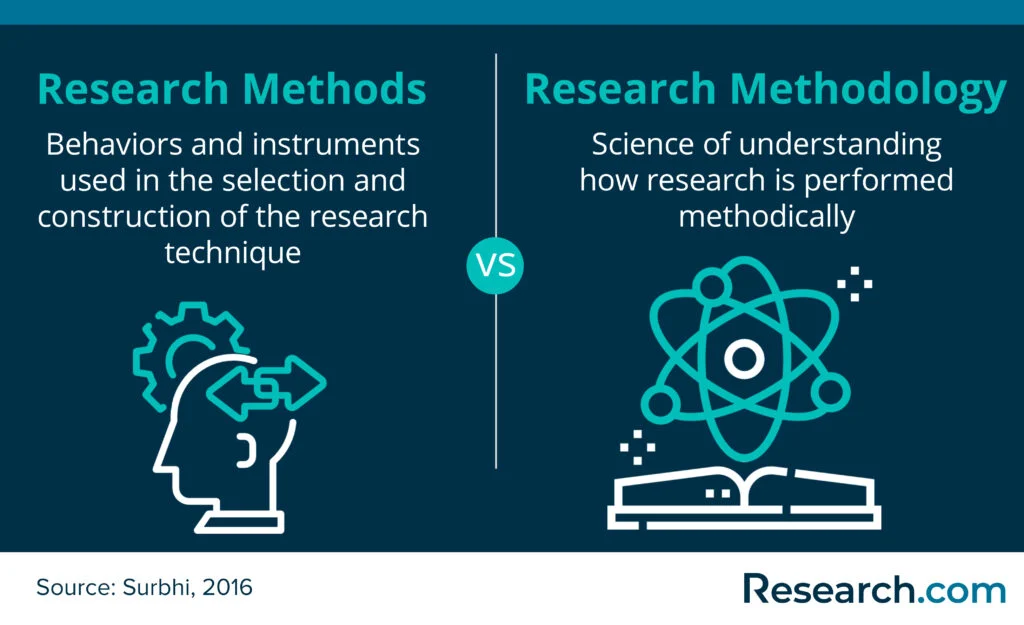Quasi-experimental studies are a type of research design that is used to study the effects of a particular intervention or treatment on a group of individuals. Unlike true experimental studies, quasi-experimental studies do not involve random assignment of participants to different groups. Instead, the researcher uses existing groups or data to measure the effects of the intervention. Quasi-experimental studies are often used when random assignment is not possible or ethical. They are also used when the researcher is interested in studying the effects of a particular intervention on a population that is not easily accessible. Quasi-experimental studies can provide valuable insight into the effects of interventions and treatments, and can be used to inform policy decisions.
Exploring the Benefits of Quasi-Experimental Studies in Social Science Research
Quasi-experimental studies are a valuable tool for social science research, offering a number of advantages over traditional experimental designs. Quasi-experimental studies are often used when it is not possible or practical to use a randomized controlled trial, and they can provide valuable insights into the causal relationships between variables. This paper will explore the benefits of quasi-experimental studies in social science research, including their ability to provide more naturalistic data, their cost-effectiveness, and their ability to study complex phenomena.
One of the primary advantages of quasi-experimental studies is that they provide more naturalistic data than traditional experimental designs. Quasi-experimental studies are often conducted in natural settings, allowing researchers to observe behavior in its natural context. This can provide valuable insights into the behavior of individuals and groups that would not be possible in a laboratory setting. Additionally, quasi-experimental studies can provide a more accurate picture of the effects of interventions, as they are not limited by the artificial constraints of a laboratory environment.
Quasi-experimental studies are also cost-effective, as they do not require the same level of resources as traditional experimental designs. Quasi-experimental studies can be conducted with fewer participants and resources, making them a more affordable option for researchers. Additionally, quasi-experimental studies can be conducted over a shorter period of time, allowing researchers to collect data more quickly and efficiently.
Finally, quasi-experimental studies are well-suited to studying complex phenomena. Quasi-experimental studies allow researchers to observe the effects of multiple variables on a single outcome, allowing them to gain a more comprehensive understanding of the phenomenon under study. Additionally, quasi-experimental studies can be used to study the effects of interventions over time, allowing researchers to observe the long-term effects of an intervention.
In conclusion, quasi-experimental studies offer a number of advantages for social science research. Quasi-experimental studies provide more naturalistic data, are cost-effective, and are well-suited to studying complex phenomena. As such, they are a valuable tool for researchers seeking to gain a better understanding of the social world.
Understanding the Different Types of Quasi-Experimental Studies
Quasi-experimental studies are a type of research design that is used to investigate the effects of an intervention or treatment on a particular population. These studies are often used when it is not possible or ethical to conduct a randomized controlled trial. Quasi-experimental studies are useful for exploring causal relationships between variables, but they are not as rigorous as randomized controlled trials and may be subject to bias.
There are several different types of quasi-experimental studies, each with its own strengths and weaknesses. The most common types of quasi-experimental studies are pre-experimental designs, post-test only designs, and interrupted time series designs.
Pre-experimental designs are the simplest type of quasi-experimental study. These studies involve a single group of participants who are exposed to the intervention or treatment and then assessed for changes in the outcome variable. Pre-experimental designs are useful for exploring the effects of an intervention, but they are subject to bias due to the lack of a control group.
Post-test only designs are similar to pre-experimental designs, but they involve two groups of participants: an experimental group that is exposed to the intervention or treatment and a control group that is not. The two groups are then assessed for changes in the outcome variable. Post-test only designs are useful for exploring the effects of an intervention, but they are subject to bias due to the lack of a pre-test.
Interrupted time series designs involve multiple measurements of the outcome variable over time, both before and after the intervention or treatment is introduced. These studies are useful for exploring the effects of an intervention, but they are subject to bias due to the lack of a control group.
Quasi-experimental studies are a useful tool for exploring the effects of an intervention or treatment on a particular population. However, it is important to understand the strengths and weaknesses of each type of study in order to ensure that the results are valid and reliable.
Comparing Quasi-Experimental Studies to Other Types of Research
Quasi-experimental studies are a type of research that is distinct from other types of research in several ways. Unlike experimental studies, quasi-experimental studies do not involve random assignment of participants to different conditions. Instead, quasi-experimental studies rely on existing groups or conditions that are already in place. This means that the researcher does not have control over the assignment of participants to different conditions, which can lead to potential confounding variables that can affect the results of the study.
In addition, quasi-experimental studies typically involve a comparison between two or more groups, rather than a single group. This allows the researcher to compare the effects of different treatments or interventions on the outcome of interest. This type of comparison is not possible in other types of research, such as descriptive or correlational studies.
Finally, quasi-experimental studies often involve the use of statistical techniques to control for potential confounding variables. This is not possible in other types of research, such as qualitative studies, which rely on more subjective methods of data collection and analysis.
Overall, quasi-experimental studies offer a unique approach to research that is distinct from other types of research. By allowing for comparisons between groups and the use of statistical techniques to control for potential confounding variables, quasi-experimental studies can provide valuable insights into the effects of different treatments or interventions on outcomes of interest.
Examining the Limitations of Quasi-Experimental Studies
Quasi-experimental studies are a valuable tool for researchers seeking to understand the effects of a particular intervention or treatment. However, it is important to recognize the limitations of this type of research. Quasi-experimental studies are not as rigorous as true experimental studies, and thus the results may be less reliable.
One limitation of quasi-experimental studies is that they lack random assignment of participants. Without random assignment, it is difficult to control for potential confounding variables that may influence the results. Additionally, quasi-experimental studies often rely on pre-existing data, which may be incomplete or biased. This can lead to inaccurate results and conclusions.
Another limitation of quasi-experimental studies is that they are often limited in scope. Quasi-experimental studies typically focus on a single intervention or treatment, and thus may not be able to provide a comprehensive understanding of the effects of a particular intervention. Additionally, quasi-experimental studies are often limited in terms of the number of participants, which can lead to results that are not generalizable to the larger population.
Finally, quasi-experimental studies are often limited in terms of the length of time they can examine the effects of an intervention. This can lead to results that are not reflective of the long-term effects of the intervention.
Overall, while quasi-experimental studies can provide valuable insights into the effects of an intervention, it is important to recognize the limitations of this type of research. Quasi-experimental studies are not as rigorous as true experimental studies, and thus the results may be less reliable. Additionally, quasi-experimental studies are often limited in scope, number of participants, and length of time, which can lead to results that are not generalizable to the larger population.
Exploring the Potential of Quasi-Experimental Studies in Education Research
Quasi-experimental studies have become increasingly popular in education research, offering a viable alternative to traditional experimental designs. This type of research has the potential to provide valuable insights into the effectiveness of educational interventions, as well as to inform policy decisions. In this paper, we will explore the potential of quasi-experimental studies in education research, discussing their advantages and limitations.
Quasi-experimental studies are designed to assess the impact of an intervention on a given outcome, without the use of random assignment. This type of research is particularly useful in educational settings, where random assignment of students to treatment and control groups is often not feasible. Quasi-experimental studies can also be used to assess the impact of educational interventions in real-world settings, where the effects of the intervention may be confounded by other factors.
One of the main advantages of quasi-experimental studies is that they can provide more accurate estimates of the effects of an intervention than traditional experimental designs. This is because quasi-experimental studies are able to control for potential confounding variables, such as prior achievement or socio-economic status. This allows researchers to isolate the effects of the intervention, and to draw more reliable conclusions about its effectiveness.
Quasi-experimental studies also have the potential to provide more generalizable results than traditional experimental designs. This is because quasi-experimental studies are able to assess the impact of an intervention in a variety of settings, rather than in a single, highly controlled environment. This allows researchers to draw conclusions about the effectiveness of an intervention in a variety of contexts, and to make more informed policy decisions.
Despite these advantages, quasi-experimental studies also have some limitations. One of the main limitations is that they are often unable to control for all potential confounding variables. This can lead to inaccurate estimates of the effects of an intervention, and can lead to erroneous conclusions about its effectiveness. Additionally, quasi-experimental studies are often unable to assess the long-term effects of an intervention, as they are typically limited to short-term outcomes.
In conclusion, quasi-experimental studies have the potential to provide valuable insights into the effectiveness of educational interventions, and to inform policy decisions. However, it is important to recognize the limitations of this type of research, and to ensure that the results are interpreted with caution.
Conclusion
Quasi-experimental studies are a valuable tool for researchers to gain insight into the effects of an intervention or treatment. They provide a way to study the effects of a treatment without the need for randomization or control groups, which can be difficult or impossible to achieve in some cases. Quasi-experimental studies can also provide valuable information about the effects of a treatment in a real-world setting, which can be difficult to replicate in a laboratory setting. While quasi-experimental studies are not as rigorous as randomized controlled trials, they can still provide valuable information about the effects of a treatment.
Discussion
[wpaicg_chatgpt]



